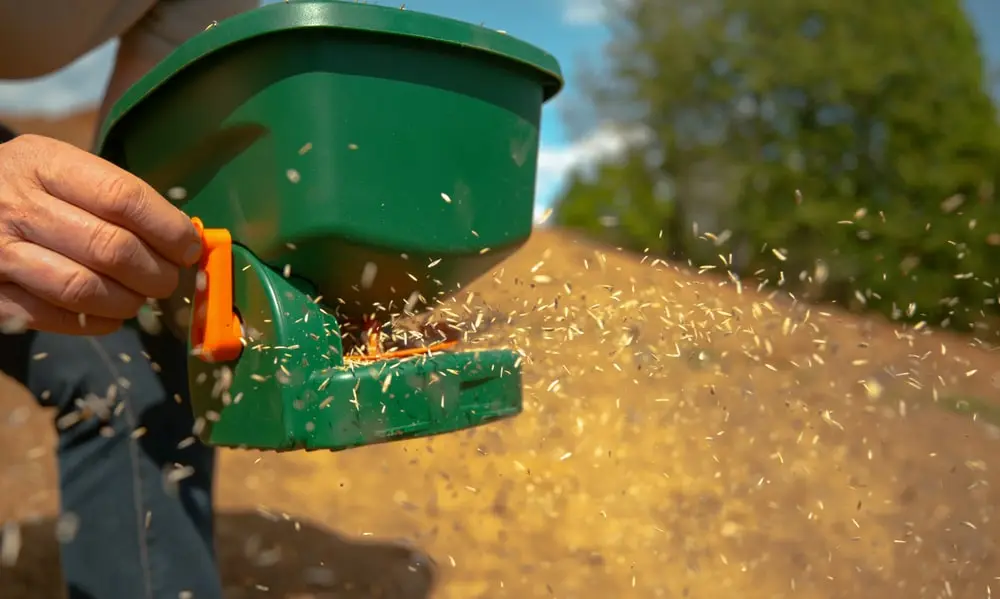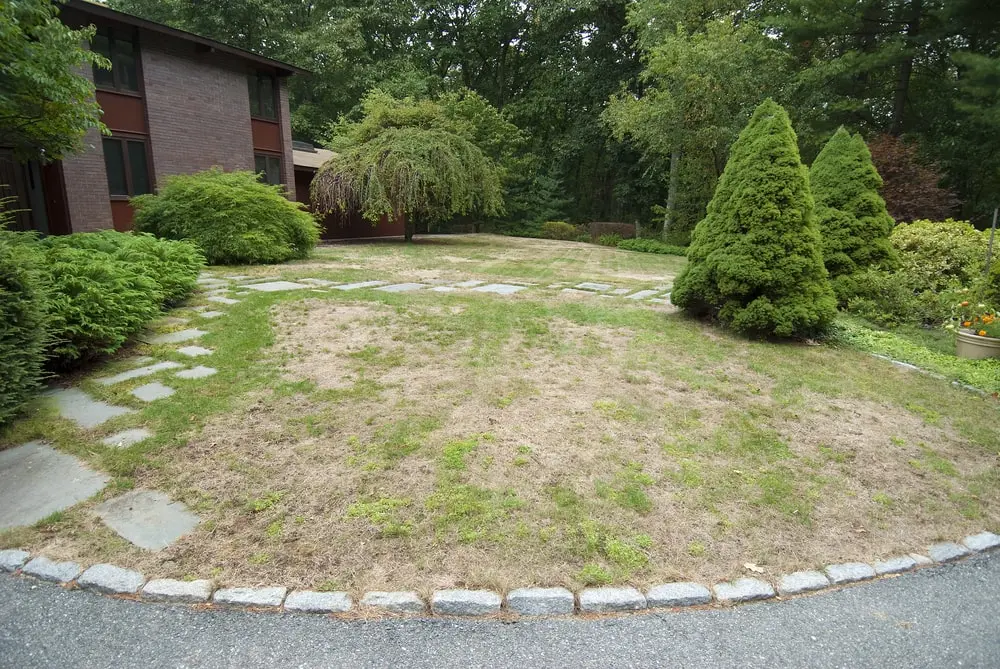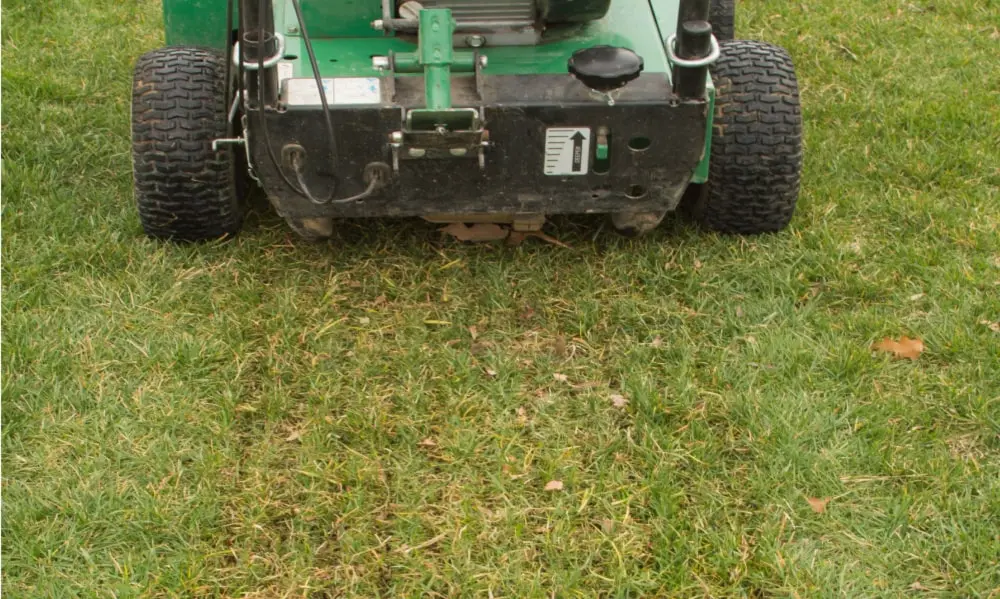What Is Overseeding and Slit Seeding?

Last Updated June 26, 2023
If your lawn looks like a patchwork quilt with some bare spots disrupting its healthy, uniform look, you may not need to tear everything out and start over by completely reseeding it. There’s a simpler fix to restore your yard to its lush beauty: overseeding. It’s the same lawn seeding technique landscapers use to sow cool-season grass seeds on top of warm-season turfgrasses to achieve a green lawn during the winter.
Table of Contents:
What Is Overseeding?

Overseeding involves planting grass seeds directly on top of your existing turfgrass. This is one of the easiest and most effective ways to cover bare spots on your lawn. One of the advantages of overseeding is that there's no need to tear up the existing turf or soil. When overseeding is done correctly, it enhances the color of your lawn, improves its density, and helps it better resist disease and drought.
How Do You Know When to Overseed Lawn?
Your lawn may benefit from overseeding if it looks old, requires more water and fertilizer, or is prone to disease and insects. As for the best time to overseed, well, that depends on where you live. For instance, in colder climates, late summer or early fall is a great time to overseed. For those with warm-season grasses and warmer temperatures, do overseeding from late spring through midsummer.
How to Properly Overseed Your Lawn

Overseeding your lawn requires more than simply tossing some extra seeds on your lawn. We’ll explain more about the processes in the “prep your lawn” section below, but for best results contact a local lawn care professional like The Grounds Guys. You can also check out this, "How to Overseed A Lawn" video!
In order to do the job properly, you’ll need to gather several essential tools and materials. Here is a list of what you’ll need:
- Lawnmower
- Lawn rake
- Grass seed
- Seed/fertilizer spreader
- Garden hose
- Lawn sprinkler(s)
Once you have all the necessary tools in place, follow these steps to complete the process:
- First, identify the reason(s) you have for overseeding your lawn.
- Next, prep your yard using our helpful steps before starting your lawn seeding project.
- Finally, consider slit seeding by using the machine and method below.
1. Reasons for Overseeding
- To rejuvenate any bare, spotty patches on your lawn. By leaving the existing grass in place, lawn seeding can fill in the gaps by sowing seeds only where new grass is needed.
- To help thicken up a sparse lawn. You can overseed your entire yard to transform a wispy lawn into a thick, lush carpet of grass.
- To crowd out weeds by adding new grass. Thick, healthy grass can outperform weeds by pulling water and nutrients away from them.
- To change your existing turfgrass to an improved variety. You may not be able to change to a different type of grass by overseeding, but you can transition to a new, improved variety of the same type of grass.
2. Prepping Your Lawn for Overseeding
- Have a soil test done. You want to make sure your grass receives the proper nutrients for optimal growth, so don’t broadcast fertilizer randomly, or you may do more harm than good. Excessive fertilization can burn grass roots, and stress the grass, which makes it more susceptible to disease.
- Decide on the type of grass seed you want. If you’re unsure of the best choice for your yard, The Grounds Guys can recommend something for you. Remove all weeds. After using a ‘lawn-safe’ herbicide, wait two weeks before lawn seeding.
- Mow your lawn. Without scalping it, mow it down to about 1 inch in height so the new grass seeds can germinate better. Typically, you should not mow your lawn to this low, but before lawn seeding a slightly lower setting is okay. You return to a normal mowing height of about 2 ½ inches, once the new grass has taken root.
- Rake the lawn (particularly if you don’t have a bagger on your mower). Remove all grass clippings, leaves, and other debris that could cause the new seeds to have spotty germination.
- Apply fertilizer based on soil test recommendations. Be sure to water the fertilizer well after it has been applied.
Following these steps will help ensure your overseeding is a success. Provided your lawn receives the proper amount of sun and water, you should start to see the result of your labor in 10 to 14 days. Slit seeding is another effective method for rejuvenating a spotty or less dense lawn. Keep reading to learn more about this process.
3. Slit Seeding
What Is Slit Seeding?

Slit seeding, or slice seeding, uses a handy lawn machine to open small grooves, or slits, in the ground in order to plant grass seed and establish your new lawn. Is slit seeding effective? Yes! Using a slit seeder is one of the best ways to overseed established turf because it drops the grass seeds deeper into the soil, which ensures better growth and protects the seeds from birds and other animals. Slit seeding is an excellent option for planting grass seeds on large lawns.
Follow these tips for using this machine effectively:
- Choose a machine that deposits grass seed only after it makes slits in the turf (not before).
- Make sure you adjust the seed broadcast setting according to the manufacturer's recommendation for a specific seed type.
- Apply half the grass seeds in one direction — in parallel rows as you do when mowing the lawn — and the other half in parallel rows perpendicular to the first series of rows.
- Water the lawn after you use a slit seeder, and keep it moist until the seeds germinate. This may mean watering the lawn every day for a couple of weeks.
When Should You Use Slit Seeding?
We recommend using a slit seeder in early fall because the cooler weather gives the seeds a better chance to germinate. Avoid slit seeding during the hot summer months.
Benefits of Overseeding and Slit Seeding

Overseeding and slit seeding will renovate your lawn so that it looks thicker, greener, and healthier. It will do all this without tearing up your lawn or using pesticides. It will also help your grass to be more resilient against pests, disease, and harsh weather.
Ready to Overseed or Slit Seed Your Lawn?
Although it might seem simple at first, overseeding your lawn requires a great deal of knowledge and expertise. If you want a fuller, greener, healthier lawn without all the work, contact The Grounds Guys. Our team of lawn care professionals have years of experience and know how to overseed a lawn properly. We provide free estimates and are happy to answer any questions. And with work that is backed by the Neighborly Done Right Promise™, you know we stand behind all the work we do.
The Grounds Guys use high-quality equipment and take pride in improving and maintaining the look of your landscape. Find your local The Grounds Guys expert and leave the hard work to the professionals!
 Click to call
Click to call


